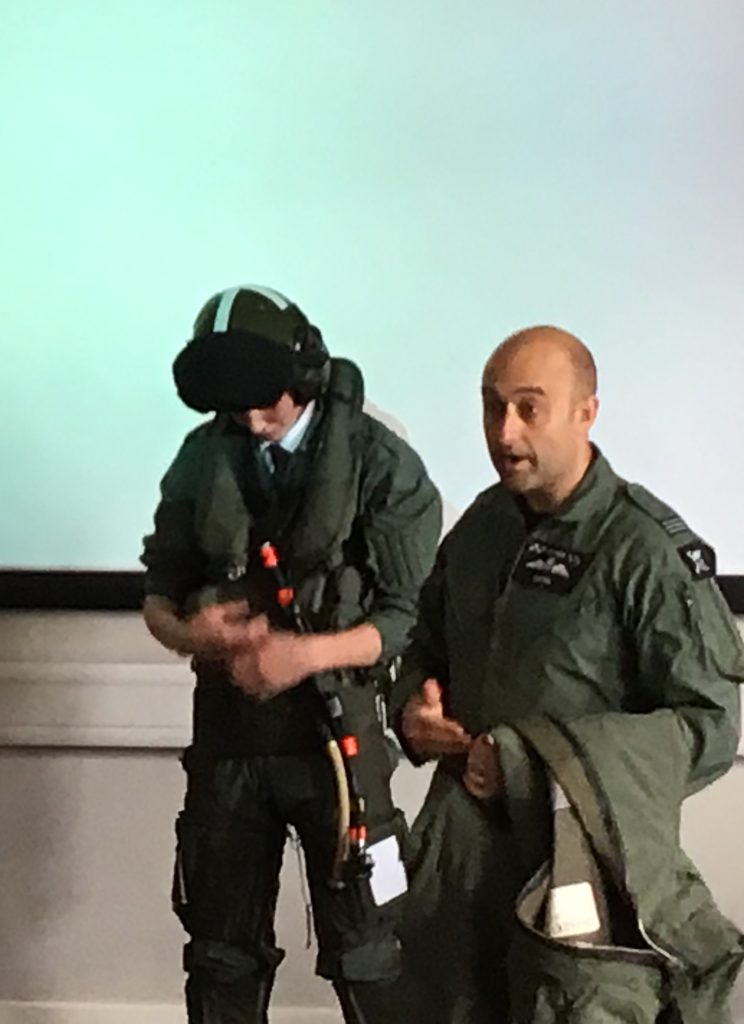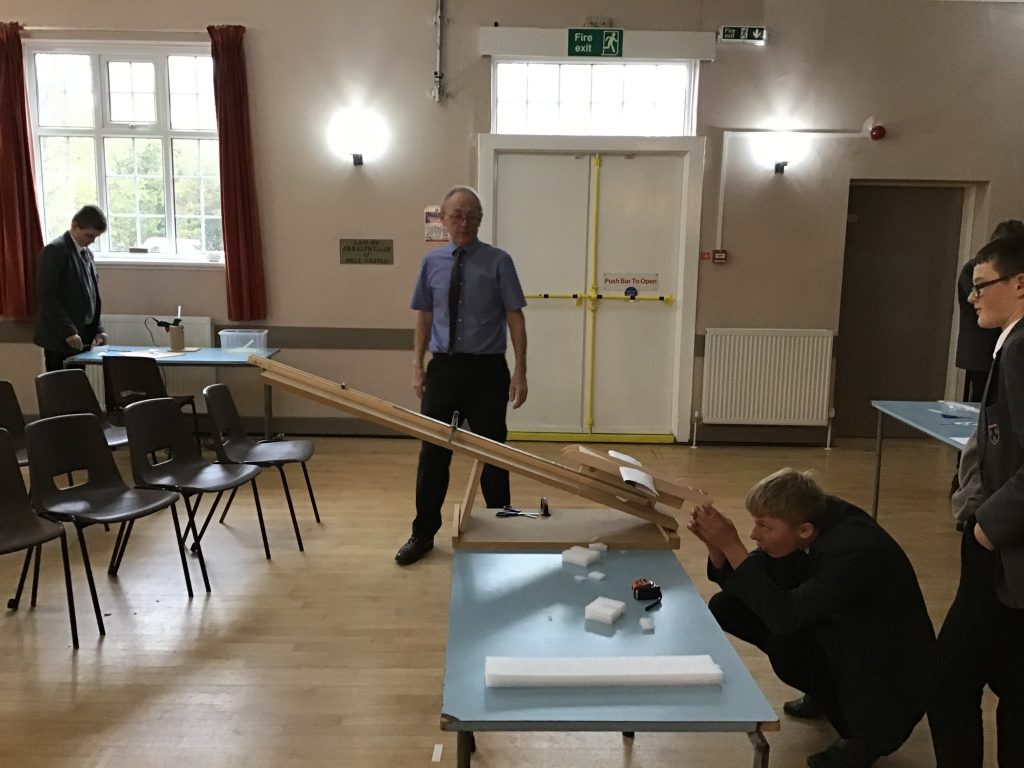This project, inspired by letters written by First World War pilot, Sir Lawrence Pattinson, and made possible due to a grant from the National Heritage Lottery Fund, enabled a group of Year 9 and 10 school children from two Northumberland schools to find out what is was like to be a pilot during the First World and put their own design and engineering skills to the test.
Day 1
The project began with the students visiting Newcastle University Special Collections and Archives where they were able to handle and read the letters written by Pattinson to his mother during the First World War. In his letters, Pattinson describes his experiences of flying over the Western Front, including for reconnaissance, and gives detailed accounts of his encounters with enemy aircraft, flying in bad weather and a mission to retrieve a broken down aircraft. The students were particularly interested in one letter, pictured below, in which Pattinson included detailed sketches of the aircraft he had encountered.

A page from a letter from Sir Lawrence Pattinson to his mother, 1915 (LAP/1/2/12)
Sir Lawrence Arthur Pattinson

Students share what they’ve learned
The students then visited the Armstrong Building where they saw the Armstrong College Memorial, a war memorial which commemorates the staff, students of Armstrong College, who lost their lives during the First World War. Here, the students learned about some of the individuals named on the memorial who lost their lives whilst serving in the Royal Flying Corps, including some who were shot down by the infamous Red Baron.

The Armstrong College War Memorial
Next, in the School of History, the students had a mini lecture on aviation during the First World War. In the lecture they learned about the development of aircraft during this period, including the advances in aeroplane design, the use of zeppelins by the Germans and the role of individuals including the Red Baron.
‘I learned that each plane had a specific job, they couldn’t multi-task’
‘Planes developed very quickly due to war’
‘Planes were unreliable’
A talk by the RAF gave the students an insight into how much things have developed over the last 100 years, with the students noting how much more sophisticated and reliable aircraft are nowadays, how much more training pilots are given and enjoying the chance to try out some of the kit worn by pilots today.

Students learn about pilot’s kit 
Students try on RAF kit
Day 1 of the project finished with the children having a tour of the School of Mechanical Engineering where they got to see machinery in action in the different workshops. This visit was designed to get them ready for the next phase of the project which would see the students start to think like engineers.
Day 2
The second day of the project saw the children visit the North East Land, Sea and Air Museum in Washington to see a replica First World War aircraft, the Morane-Saulnier and learn about its pilot, local man Claude Ridley.

Students looking at a replica WW1 aircraft at the North East Land, Sea and Air Museum. 
Volunteers at the North East Land, Sea and Air Museum tell the students how they went about building a replica First World War aeroplane.
‘I enjoyed seeing old planes and the history behind them’
‘I found it interesting that the replica plane was hand built but part of it was 3D printed’.
‘The most interesting thing I learned about the replica First World War plane was that it had rotating wings’
‘The fabric around the plane is hardened and shrunk using dope’
‘It’s surprisingly cheap to make a non-working replica’
‘The most interesting thing I learned was that Claude Ridley was head of an airbase at 19 [years old]’
In the afternoon, the students had a tour of the nearby Rolls Royce facility to see how aircraft turbine discs are manufactured today.
‘I enjoyed the factory tour’
‘I enjoyed seeing the machines’
‘I enjoyed learning about a new job experience’
Day 3
Day 3 of the project saw the students participate in some workshops led by STEM practitioner Technology Tom. The students took part in some experiments to show them the basic principles of flight, before having a go at designing their own First World War aircraft, inspired by the sketches in Pattinson’s letters.

Students launching their model aircraft to see how far they can fly.
Day 4
The final day of the project was a Challenge Day held at Newcastle University in which the students worked in teams to research, design, build and improve their own World War I style aircraft. They then had a competition to see which aircraft could glide the furthest, and which looked most like the sketches in Pattinson’s letters. Judging was done by the University’s STEM Outreach Team and the students reflected on their learning and received a CREST Discovery award in recognition of all their hard work!




Students completing their STEM Challenge to design a First World War style model aeroplane.
Have a go yourself!
An education pack has been created to enable other schools to have a go at the same activities as the students in this project, from using extracts from Sir Lawrence Pattinson’s letters to discover what it was like to be a pilot in the First World War, to carrying out experiments to learn about the principles of flight and designing their own model aircraft. You can download the education pack here: https://www.ncl.ac.uk/library/services/education-outreach/resources/sir-lawrence-pattinson
For more information about the services offered by the University Library Education Outreach Team please visit our website: https://www.ncl.ac.uk/library/services/education-outreach/
